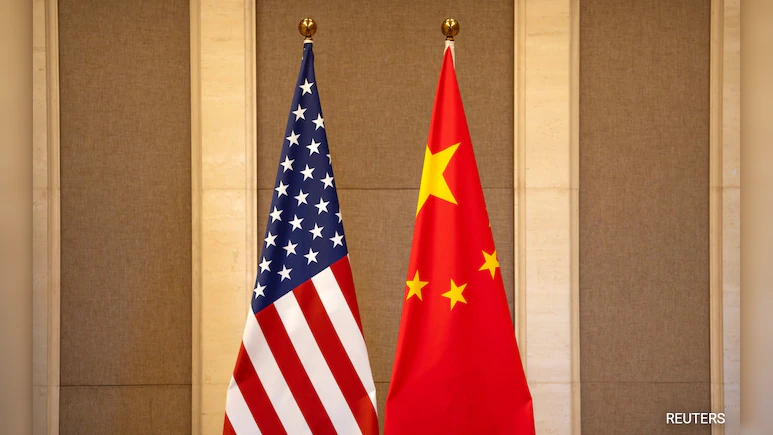The turbulent relationship between the United States and China is no longer just a diplomatic drama unfolding across the Pacific—it carries deep strategic relevance for India. Their evolving dynamic, marked by cycles of conflict and cooperation, reflects not just geopolitical posturing but a profound recalibration of global power. For India, watching the interplay between these two giants offers both a cautionary tale and a strategic opportunity: to understand its own role, vulnerabilities, and aspirations in a rapidly emerging multipolar order.
The Great Disengagement
In his compelling new book Breaking the Engagement: How China Won and Lost America, renowned American scholar David Shambaugh bluntly declares that the era of U.S. engagement with China is “dead.” This isn’t just academic pessimism—it reflects a seismic shift in American public sentiment. Polls show that 80% of Americans now hold unfavorable views of China, and nearly half consider it an outright adversary. These views are now shaping U.S. policy: from punitive tariffs and student visa curbs to tighter scrutiny of Chinese businesses operating on American soil.
Ironically, some of the very Chinese nationals targeted today by U.S. policy are alumni of American institutions—trained in the very halls that once symbolized the spirit of academic exchange and global openness. That era is now in retreat.
From Missionary Zeal to Cold Rivalry
This cooling of ties marks the end of a long, often patronizing American ambition to reform China in its image. Historically, the U.S. relationship with China has been deeply rooted in a form of ideological paternalism. From the late 18th century onward, American missionaries, capitalists, and policymakers sought to transform China—not merely through trade, but by reshaping its political, religious, and social systems to mirror a liberal, Western worldview.
That paternalistic optimism persisted well into the early 21st century. American companies profited from China’s cheap labor and manufacturing prowess, while China’s leadership—particularly under Deng Xiaoping, Jiang Zemin, and Hu Jintao—embraced global capitalism as a peaceful path to national rejuvenation. The U.S. and China weren’t ideological allies, but their interests converged enough to coexist.
Xi Jinping and the Rise of Confrontation
Everything changed with the rise of Xi Jinping. His tenure has marked a radical departure from the reformist path, replacing it with a more assertive, nationalist agenda. Under Xi, China’s tone has hardened, both at home and abroad. The U.S., in turn, has shifted from a strategy of engagement to one of strategic competition.
The election of Donald Trump in 2016 catalyzed this transition. Trump’s confrontational trade war, visa bans, and rhetoric set the tone. And though Joe Biden’s administration has adopted a more measured voice, the substance remains unchanged: the U.S. now sees China not as a partner to reform, but as a rival to contain.
As Shambaugh notes, the tension is not merely tactical—it is systemic. China’s centralized one-party state, combined with demographic decline, economic overcapacity, and a growing security apparatus, makes it increasingly difficult for the U.S. to find common ground. The conflict is embedded in the DNA of their systems.
India’s Strategic Dilemma
For India, caught between these two titans, the implications are profound. While the first Cold War allowed New Delhi the luxury of non-alignment, today’s geopolitical reality does not. Unlike the U.S.-USSR rivalry, China is on India’s doorstep—aggressive at the border, and deeply entrenched in the region through its partnerships with Pakistan and expanding influence in South Asia.
India cannot afford to be neutral in a world where Chinese ambition directly threatens its sovereignty. Yet, it must also resist being a junior partner in a new Western bloc. The answer lies in strategic autonomy—a foreign policy that leverages partnerships without surrendering independence.
‘Competitive Coexistence’ and India’s Imperative
Shambaugh suggests that the future of U.S.-China ties lies in a framework of “competitive coexistence”—a cold peace, not unlike the Cold War, but grounded in economic interdependence and mutual deterrence. For India, this concept has dual meaning.
First, it reaffirms the importance of resilience—India must build its internal strength, from its economy and infrastructure to its defense and technology sectors.
Second, it demands clarity—India must articulate and pursue a national vision that is neither a shadow of American liberalism nor an imitation of Chinese authoritarian efficiency.
This is not a call for protectionism or paranoia. Shambaugh provocatively suggests using historical tools like the U.S.’s “Trading with the Enemy Act” to scrutinize economic ties that threaten national interest. While controversial, the logic holds: economic engagement must not become a Trojan horse. India’s welcome of Chinese investment must come with firm boundaries, especially when it touches critical infrastructure or sensitive sectors.
Pragmatism Over Passivity
India’s path forward must be guided by pragmatic assertiveness. As China tightens its grip through a blend of nationalism and surveillance-state control, India must lean into its strengths: a young population, a vibrant democracy, and a growing tech-savvy middle class.
Passive accommodation—whether to China’s coercive tactics or to America’s occasional moral lecturing—is no longer a viable option. Instead, India must become a pole in its own right: confident, self-defined, and immune to the ideological binaries of Washington and Beijing.
Conclusion: Charting India’s Unique Course
The current state of U.S.-China relations, shaped by mistrust, systemic divergence, and economic decoupling, offers India a front-row seat to a new world order in the making. This is no longer a unipolar globe but a multipolar chessboard, and India must play with both caution and creativity.
India’s destiny lies not in choosing between two powers, but in crafting a sovereign path—a uniquely Indian model of growth, governance, and diplomacy. In this new age of “competitive coexistence,” the victors will not be those who cling to outdated alliances or mimic dominant powers, but those who have the courage to define their own future.



